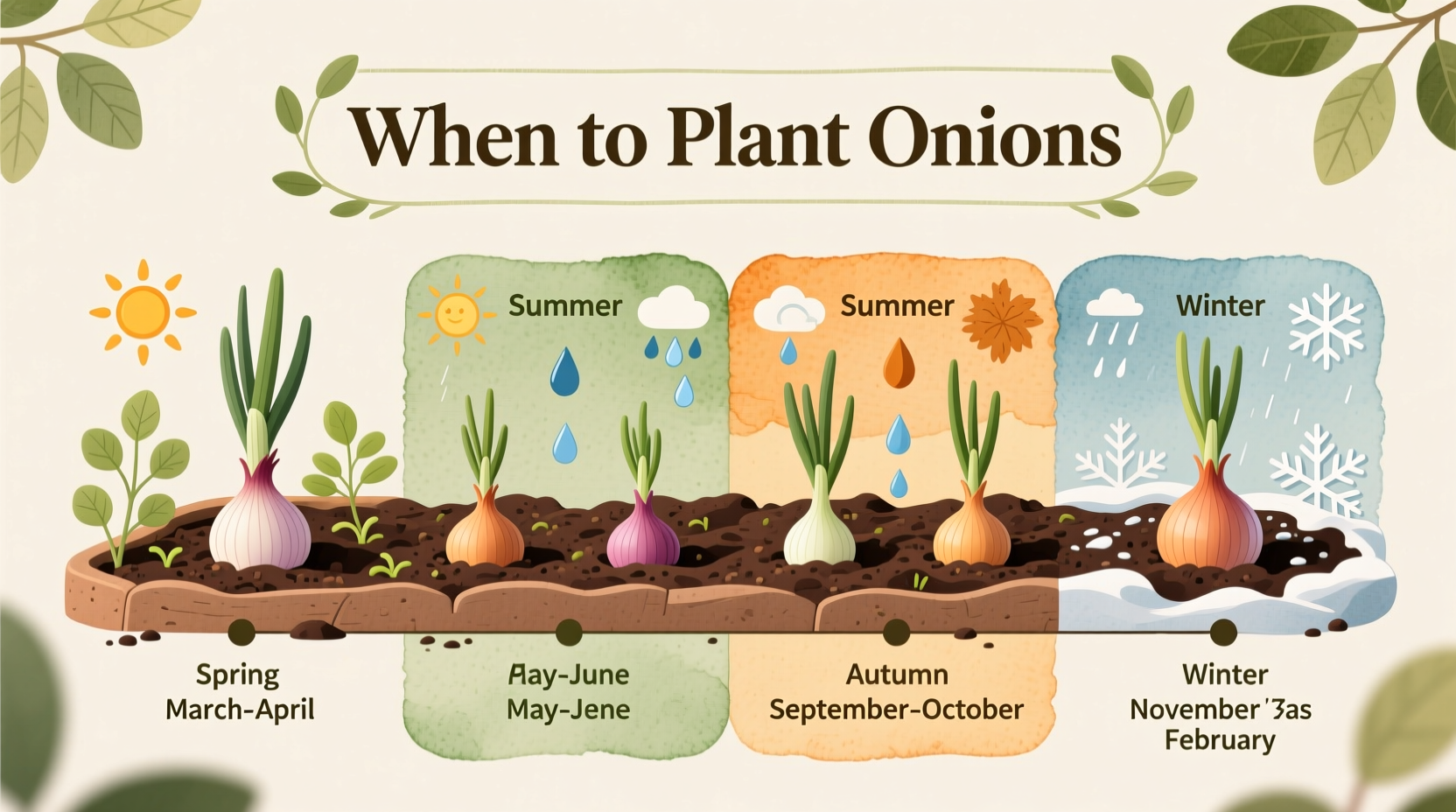Plant onions 4-6 weeks before your last expected spring frost date for spring planting, or 4-6 weeks before first fall frost in mild climates (zones 7-10). Soil temperature should be at least 40°F (4°C) for successful germination.
Knowing exactly when to plant onion varieties can make the difference between a bountiful harvest and disappointing results. This comprehensive guide provides region-specific timing, planting techniques, and expert-backed strategies to ensure your onion crop thrives regardless of your climate zone.
Understanding Onion Planting Requirements
Onions are cool-season crops that require precise timing for optimal growth. Unlike many vegetables, onions respond to day length as much as temperature, making proper planting timing critical for bulb development. The key factors determining best time to plant onions in spring include your USDA hardiness zone, local frost dates, and the specific onion variety you're growing.
| USDA Hardiness Zone | Recommended Planting Window | Soil Temperature Requirement | Onion Type Recommendation |
|---|---|---|---|
| Zones 3-5 | Early to mid-April | 40-50°F (4-10°C) | Long-day varieties |
| Zones 6-7 | Late March to early April | 45-55°F (7-13°C) | Intermediate-day varieties |
| Zones 8-10 | October to November (fall planting) | 50-65°F (10-18°C) | Short-day varieties |
This planting schedule aligns with research from the University of Minnesota Extension, which confirms that proper timing based on day-length requirements is essential for bulb formation. Onions form bulbs when they've experienced sufficient cool weather followed by increasing daylight hours.
Regional Planting Timelines Explained
Your geographic location dramatically affects when to plant onion sets versus seeds. Let's break down the optimal planting windows by region:
Northern Climates (Zones 3-5)
In colder regions, plant onions as soon as the soil can be worked in early spring, typically late March through mid-April. The University of Florida IFAS Extension recommends starting onions indoors 8-10 weeks before your last frost date if you're growing from seed, then transplanting seedlings outdoors when soil temperatures reach at least 40°F.
Mid-Latitude Regions (Zones 6-7)
For gardeners in moderate climates, the best time to plant onions in Ohio or similar zones is late March to early April. This timing allows plants to establish before summer heat while still catching the increasing daylight that triggers bulb formation. Fall planting is generally not recommended in these zones due to winterkill risk.
Southern Climates (Zones 8-10)
In warmer regions where winters are mild, the ideal time to plant onions in Texas or California is during fall (October-November). The University of California Cooperative Extension confirms that fall-planted onions develop strong root systems during winter and form bulbs as days lengthen in spring, resulting in larger harvests than spring-planted crops.
Step-by-Step Onion Planting Guide
Follow these science-backed steps for successful onion planting regardless of your location:
Soil Preparation (2 Weeks Before Planting)
- Test soil pH (onions prefer 6.0-6.8)
- Amend with 2-3 inches of compost
- Add balanced fertilizer (10-10-10) at 1 lb per 100 sq ft
- Ensure proper drainage (onions hate wet feet)
Planting Techniques
Whether you're planting seeds, sets, or transplants, proper depth and spacing are crucial for when to plant onion bulbs for maximum yield:
- Seeds: Plant 1/4 inch deep, 2 inches apart in rows 12-18 inches apart
- Sets: Plant with pointed end up, 1-2 inches deep, 4-6 inches apart
- Transplants: Plant so soil covers roots but not the green shoots

Avoiding Common Onion Planting Mistakes
Even experienced gardeners make timing errors that reduce yields. These evidence-based tips will help you avoid the most frequent mistakes:
Planting Too Early in Cold Soils
While eager gardeners might rush planting, the Cornell Cooperative Extension warns that planting in soil below 40°F causes poor germination and increases disease risk. Use a soil thermometer to verify temperatures before planting.
Misunderstanding Day-Length Requirements
Planting the wrong onion type for your latitude is the #1 reason for crop failure. Short-day onions (needed in southern zones) won't bulb properly in northern regions, while long-day varieties fail to bulb in southern climates. The USDA Agricultural Research Service confirms this critical regional variation.
Neglecting Succession Planting
For continuous harvest, plant every 2-3 weeks during your recommended planting window. This technique, validated by the National Gardening Association, ensures you'll have green onions throughout the season while maincrop bulbs mature.
Special Considerations for Different Onion Types
Understanding the specific needs of your chosen variety is essential for determining when to plant sweet onions versus storage onions:
- Long-day onions (needed in northern zones): Require 14-16 hours of daylight to bulb (plant in early spring)
- Intermediate-day onions: Need 12-14 hours of daylight (ideal for mid-latitudes)
- Short-day onions: Bulb with 10-12 hours of daylight (must be fall-planted in southern zones)
- Multiplier onions: Can be planted in either spring or fall depending on climate
According to research published in the HortScience journal, matching onion varieties to your specific day-length conditions improves bulb size by up to 35% compared to mismatched varieties.
When to Harvest Your Onion Crop
Knowing when to plant onions is only half the equation—harvest timing matters equally. Onions are ready to harvest when:
- Leaves begin yellowing and falling over (typically 100-120 days after planting)
- Neck of the bulb becomes soft
- Outer skin turns papery and dry
In northern climates, harvest occurs July-August. Southern fall-planted crops are typically ready April-May. Proper curing (drying for 2-3 weeks after harvest) is essential for storage onions regardless of when you plant onion sets.











 浙公网安备
33010002000092号
浙公网安备
33010002000092号 浙B2-20120091-4
浙B2-20120091-4